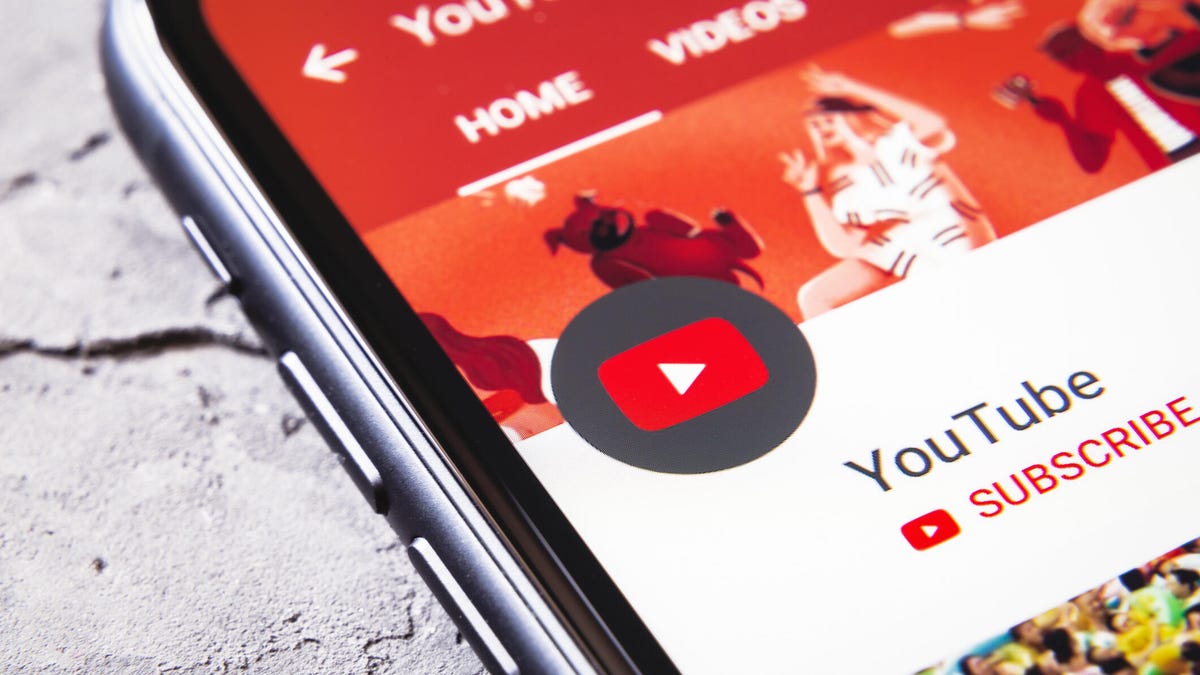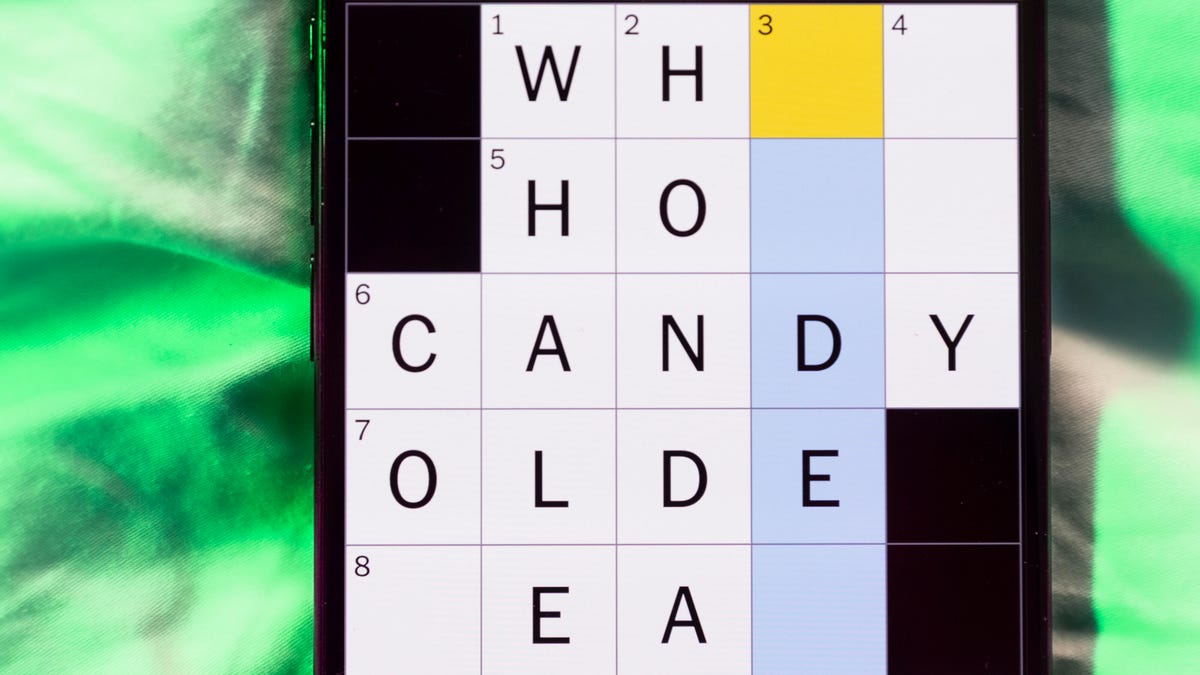Technologies
Climate Denial on YouTube Is Evolving. Here’s How to Make Sense of It
Shapeshifting narratives make climate denial harder to spot. But being aware is half the battle.

If you encountered climate change denial on the internet, how confident are you that you could recognize it for what it was?
You might think you have a good idea of what climate misinformation and disinformation look like, but a report published on Tuesday by the Center for Countering Digital Hate serves as a warning to us to be vigilant about the shapeshifting nature of climate denial.
The CCDH has been monitoring the presence of climate denial on YouTube and has seen a collapse in many of the old narratives that used to dominate on the platform. But, over the past five years, newer denial narratives have taken hold and now make up 70% of all climate denial on the platform — up from 35% in 2018.
Climate scientists around the world are unanimous in their verdicts, both when it comes to the causes of climate change and its solutions. We’re also increasingly feeling the effects of climate change in our lives in the form of extreme weather, from heatwaves to hard-hitting storms, forest fires and floods. But no matter how much progress is made by scientists or how much the realities of the climate crisis hit home, there have always been, and likely always will be, many who seek to undermine the truth for financial or political reasons.
In the past, climate denial largely focused on invalidating the existence and causes of climate change. You might have heard arguments saying that climate change doesn’t exist, with people arguing it’s a conspiracy or that the unpredictable and extreme weather being experienced around the world can be explained away as natural fluctuations in our planet’s weather patterns.
Scientists have proven these narratives false, and the use of them as denial narratives is, thankfully, increasingly rare. In its report, the CCDH quotes climate skeptiscm researcher John Cook as saying this is because «science denial has become untenable» in light of people experiencing climate impacts for themselves.
Using AI to scan transcripts from over 12,000 climate-related videos, the CCDH found that mentions of one of the key false narratives – that global warming doesn’t exist – dropped from 48% in 2018 to 14% last year.
But filling the void, new forms of climate denial are on the rise. Rather than arguing against the existence of climate change and its causes, new climate denial aims to undermine solutions and the work of the global climate movement.
The prevalence of the narrative that climate solutions don’t work is up from 9% to 30%, meanwhile there’s been a 23% to 35% jump in suggestions that climate science, policy and the climate movement are unreliable.
Just as scientists are clear about the causes of climate change, they’re also clear about what the solutions are and that they work. Over and over again, they’ve reiterated that the main thing we need to do is stop burning fossil fuels that emit harmful greenhouse gasses into the atmosphere. Green energy alternatives — including solar, wind and hydro — work. They’re reliable, cost efficient and take up the same or even less space than current energy infrastructure.
«The bad guys have moved the battleground from the realities of anthropogenic climate change to trying to disrupt another part in the chain that leads to action,» said Imran Ahmed, chief executive of the CCDH in a briefing ahead of the report’s publication.
How to identify new climate denial
Climate denial has long relied on a mix of pseudoscientific claims and politically motivated propaganda. In the past, multiple investigations have found that it was largely funded and propagated, both overtly and covertly, by the fossil fuel lobby. Climate denial may look different from the way it has in the past, but in its newer forms it can be equally insidious.
This is all worth bearing in mind when you’re spending time on social media platforms such as YouTube, which allows the discussion of denial narratives, but demonetizes them.
«Our climate change policy prohibits ads from running on content that contradicts well-established scientific consensus around the existence and causes of climate change,» said a YouTube spokesperson in a statement. «We also display information panels under relevant videos to provide additional information on climate change and context from third parties.»
In spite of this, the CCDH found adverts running on videos including newer forms of climate denial. After raising these cases with YouTube, some videos were demonetized but the majority were found to not contravene YouTube’s policies, suggesting that the evolution of climate denial narratives is creating ambiguity.
The CCDH recommends that Google and other social platforms update their policies to reflect the presence of new forms of climate denial. But as we use these platforms, it’s also important for us to be wary that these narratives are out there. And they’re looking for new audiences.
Where might you find such new forms of climate denial? In its report, the CCDH points to several YouTube channels with follower counts in their millions, including Jordan Peterson, BlazeTV and PragerU. But there are just a handful of sources included among the 96 channels studied by the CCDH.
As well as the fossil fuel lobby, controversial creators on digital platforms are incentivized to keep spinning these new denial narratives as they’re rewarded with clicks, views and money, said Ahmed.
What are the red flags? Look out for content that includes what climate scientist and University of Pennsylvania Professor Michael Mann has identified as the five Ds: deflection, delay, division, despair and doomism.
If you’ve stumbled across a narrative that’s attempting to deflect the conversation away from scientifically approved climate solutions or delay their adoption, that can be a warning sign. Likewise, denial content could be attempting to sow discord between climate experts or experts.
Finally, don’t subscribe to doom and gloom narratives. The truth is there is plenty that can be done about climate change, and there is plenty that is being done.
Technologies
Today’s NYT Mini Crossword Answers for Wednesday, Nov. 5
Here are the answers for The New York Times Mini Crossword for Nov. 5.

Looking for the most recent Mini Crossword answer? Click here for today’s Mini Crossword hints, as well as our daily answers and hints for The New York Times Wordle, Strands, Connections and Connections: Sports Edition puzzles.
Need some help with today’s Mini Crossword? Some of the clues are tricky, but we have all the answers, so read on. And if you could use some hints and guidance for daily solving, check out our Mini Crossword tips.
If you’re looking for today’s Wordle, Connections, Connections: Sports Edition and Strands answers, you can visit CNET’s NYT puzzle hints page.
Read more: Tips and Tricks for Solving The New York Times Mini Crossword
Let’s get to those Mini Crossword clues and answers.
Mini across clues and answers
1A clue: Fresh addition to a pasta sauce, perhaps
Answer: BASIL
6A clue: Log ___ (water park ride)
Answer: FLUME
7A clue: Group of ships
Answer: FLEET
8A clue: Some drinks from «streams»
Answer: SODAS
9A clue: Documentarian Burns
Answer: KEN
Mini down clues and answers
1D clue: Closest pals, for short
Answer: BFFS
2D clue: «No problems here!»
Answer: ALLOK
3D clue: Shoe material in an Elvis hit
Answer: SUEDE
4D clue: «That is to say …»
Answer: IMEAN
5D clue: Tennis do-overs
Answer: LETS
Technologies
Apple Reportedly Planning Cheaper Macs to Compete With Budget Chromebooks, PCs
Apple doesn’t market its machines as affordable, but that could be changing.

Apple may release more affordable Mac laptops to compete with Chromebooks and budget-friendly Windows laptops as early as 2026.
Bloomberg’s Mark Gurman reports the company has plans to roll out a machine for «well under $1,000.» According to Gurman, the new laptop is already in early production under the codename J700. This matches earlier rumors that a low-cost MacBook Air was in the pipeline at around $599, which would allow Apple to directly compete with other cheap laptops, including Chromebooks and Windows PCs.
A representative for Apple did not immediately respond to a request for comment.
Don’t miss any of our unbiased tech content and lab-based reviews. Add CNET as a preferred Google source.
According to the report, costs will be kept down by using a lower-end LCD that’s smaller than the 13.6-inch MacBook Air, potentially making the new affordable MacBook as small as 12 inches.
Another way Apple could reduce the cost is by using an A-series iPhone chip, which falls short of the top-tier performance offered by the MacBook Pro or the current M4 Air. The upcoming chip may be a variant of the A19 Pro chip that debuted with the iPhone 17 Pro and iPhone Air, which Apple says is capable of MacBook-level performance.
As CNET senior editor Matt Elliott noted, the promise is a bold one. He speculates that the rumored $599 MacBook Air may get the same smartphone processor, or an M-series chip based on that architecture.
Bloomberg also reports that a MacBook Pro with an M5 Pro and M5 Max chip is in development, and Apple has completed work on a MacBook Air powered by the M5 chip, which is planned for release early next year.
The affordable laptop would be designed for casual users, students and businesses, specifically individuals who need a device for tasks such as web browsing, light media editing and document creation. The tech giant is also targeting the education market, as well as iPad buyers who may also want a traditional laptop.
«If this is strictly a move to entice consumers with a high-quality, lower-cost MacBook running MacOS in place of an iPad with a keyboard, then yes, Apple can likely take a chunk of that market,» said Josh Goldman, managing editor at CNET.
«Making inroads into the education market at this point, where Chromebooks have taken over since the pandemic, will prove challenging, though I’m sure it’s nothing that throwing billions of dollars at can’t fix,» CNET’s Goldman said.
This price range is ‘a big departure’
Price is likely to be key here. A $599 price tag would place the new Mac in the same range as more affordable Chromebooks and entry-level laptops, representing a significant change from Apple’s previous strategy.
«Apple potentially dipping into the Chromebook range of $300 to $500 with a new MacBook is a big departure,» said Goldman.
He notes that one of Apple’s most affordable MacBooks is the M4 MacBook Air, available new starting at $999 for the 13-inch model. Walmart still sells a new M1 MacBook Air, a 5-year-old laptop, for around $600.
By contrast, an iPad 11th Gen with a Magic Keyboard will run you around $600, making it clear that Apple’s target market for the rumored device is students and lighter users.
Apple typically hasn’t targeted the lower-priced segment of the market with its MacBooks. However, with consumer wallets under pressure from inflation, high tariffs and layoffs, an affordable MacBook could be imperative and timely.
Technologies
Today’s NYT Connections: Sports Edition Hints and Answers for Nov. 5, #408
Here are hints and the answers for the NYT Connections: Sports Edition puzzle for Nov. 5, No. 408.

Looking for the most recent regular Connections answers? Click here for today’s Connections hints, as well as our daily answers and hints for The New York Times Mini Crossword, Wordle and Strands puzzles.
Today’s Connections: Sports Edition is pretty diverse. The blue answers stuck out to me right away, because some of them are super famous and the others felt like they belonged with those names. If you’re struggling but still want to solve it, read on for hints and the answers.
Connections: Sports Edition is published by The Athletic, the subscription-based sports journalism site owned by the Times. It doesn’t show up in the NYT Games app but appears in The Athletic’s own app. Or you can play it free online.
Read more: NYT Connections: Sports Edition Puzzle Comes Out of Beta
Hints for today’s Connections: Sports Edition groups
Here are four hints for the groupings in today’s Connections: Sports Edition puzzle, ranked from the easiest yellow group to the tough (and sometimes bizarre) purple group.
Yellow group hint: How to see a game.
Green group hint: Soccer.
Blue group hint: Giddy up!
Purple group hint: Not a run play.
Answers for today’s Connections: Sports Edition groups
Yellow group: Ways to consume a sporting event.
Green group: NWSL teams.
Blue group: Triple Crown horse racing winners.
Purple group: Pass ____.
Read more: Wordle Cheat Sheet: Here Are the Most Popular Letters Used in English Words
What are today’s Connections: Sports Edition answers?
The yellow words in today’s Connections
The theme is ways to consume a sporting event. The four answers are in person, radio, streaming and television.
The green words in today’s Connections
The theme is NWSL teams. The four answers are Current, Dash, Pride and Spirit.
The blue words in today’s Connections
The theme is Triple Crown horse racing winners. The four answers are Citation, Gallant Fox, Omaha and Secretariat.
The purple words in today’s Connections
The theme is pass ____. The four answers are breakup, interference, protection and rush.
-

 Technologies3 года ago
Technologies3 года agoTech Companies Need to Be Held Accountable for Security, Experts Say
-

 Technologies3 года ago
Technologies3 года agoBest Handheld Game Console in 2023
-

 Technologies3 года ago
Technologies3 года agoTighten Up Your VR Game With the Best Head Straps for Quest 2
-

 Technologies4 года ago
Technologies4 года agoVerum, Wickr and Threema: next generation secured messengers
-

 Technologies4 года ago
Technologies4 года agoBlack Friday 2021: The best deals on TVs, headphones, kitchenware, and more
-

 Technologies4 года ago
Technologies4 года agoGoogle to require vaccinations as Silicon Valley rethinks return-to-office policies
-

 Technologies4 года ago
Technologies4 года agoOlivia Harlan Dekker for Verum Messenger
-

 Technologies4 года ago
Technologies4 года agoiPhone 13 event: How to watch Apple’s big announcement tomorrow
